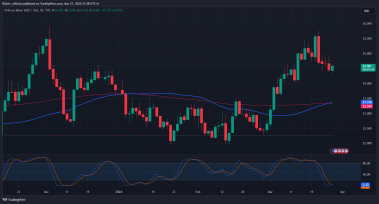Wednesday saw a decline in oil prices as worries about fuel consumption were fueled by anticipation that the minutes from the U.S. Federal Reserve’s most recent policy meeting, due later in the day, would indicate a need for higher interest rates.
The price of Brent crude futures for April delivery had dropped 66 cents, or 0.79%, to $82.39 per barrel. The price of a barrel of West Texas Intermediate (WTI) crude for April decreased by 54 cents, or 0.71%, to $75.82.
After recent statistics showed stronger-than-anticipated U.S. employment and consumer price growth, the U.S. Fed is set to issue the minutes of its most recent meeting on Wednesday, which will provide traders with a glimpse of how high policymakers anticipate interest rates will go.
Rising interest rates strengthen the dollar, increasing oil prices in other currencies and lowering demand.
However, other economic data from the United States, the largest oil consumer in the world, showed some concerning trends. In January, existing-home sales dropped to their lowest level since October 2010.
A preliminary Reuters analyst poll on Tuesday also showed a rise in U.S. crude inventories, exacerbating the demand worries.
However, the economic outlook across Europe continues to show resilience, UBS said in a note. This followed business surveys released on Tuesday which showed surprisingly strong growth.
Expectations of tighter global supplies and rising demand from China also cushioned overall price weakness.
Experts predict that China’s oil imports will reach a record high in 2023 due to rising demand for transportation fuel and the startup of new refineries.
State-owned PetroChina and Unipec have reserved 10 supertankers to import oil from the United States next month, equivalent to around 20 million barrels of crude, according to a note from senior commodity strategist Daniel Hynes at ANZ Bank. This is an indication of escalating Chinese demand. The greatest oil importer in the world is China.
As China’s reopening has gained more traction and the aviation industry is recovering, Morgan Stanley (NYSE:MS) has increased its forecast for global oil demand growth this year by around 36%. Nevertheless, higher supply from Russia has been noted as an offsetting issue.




 By:
By:





